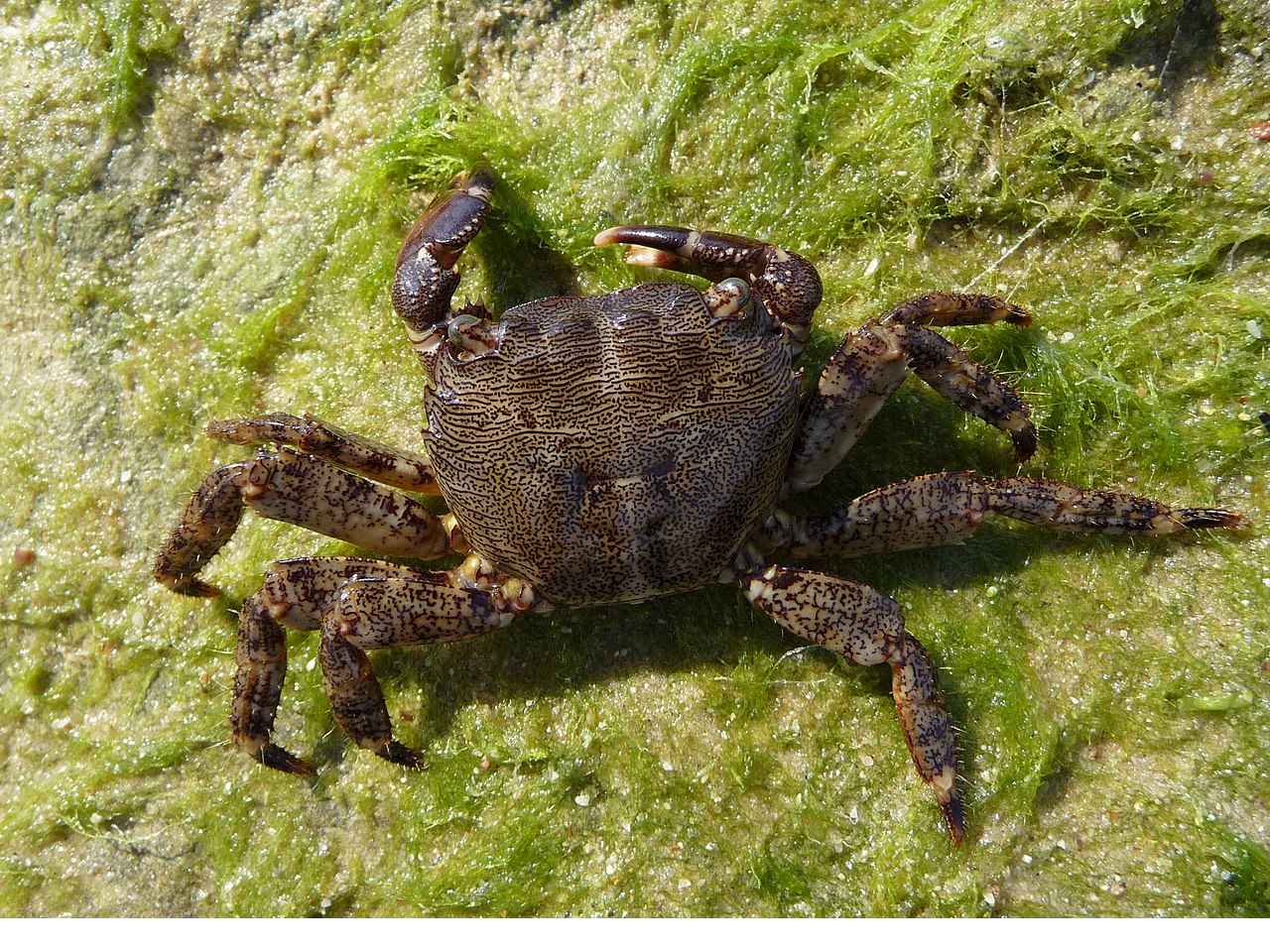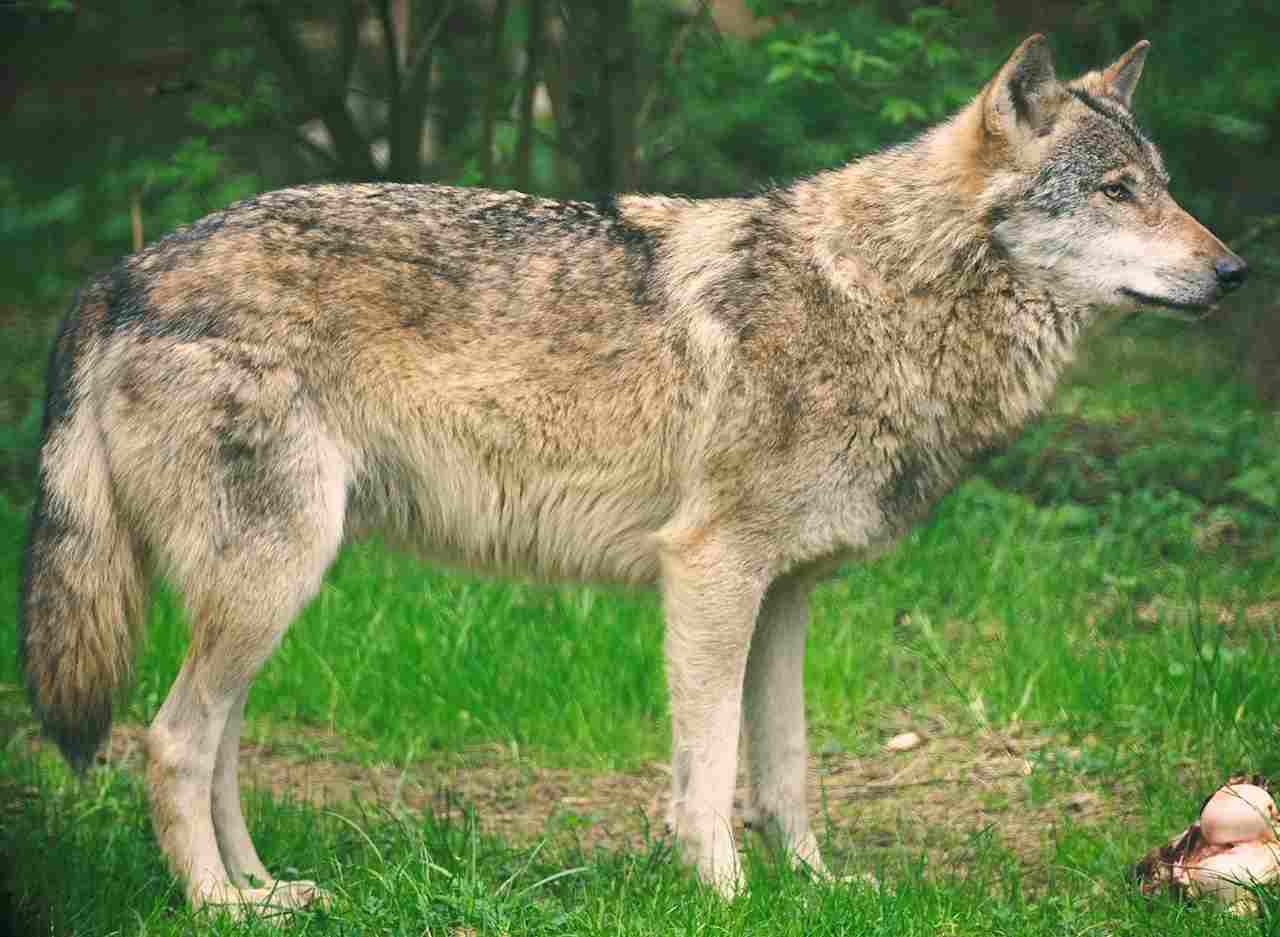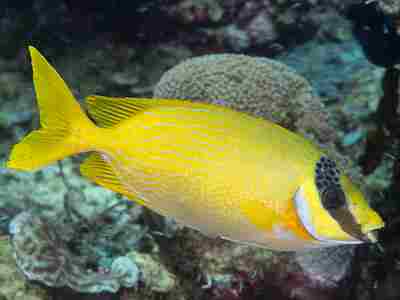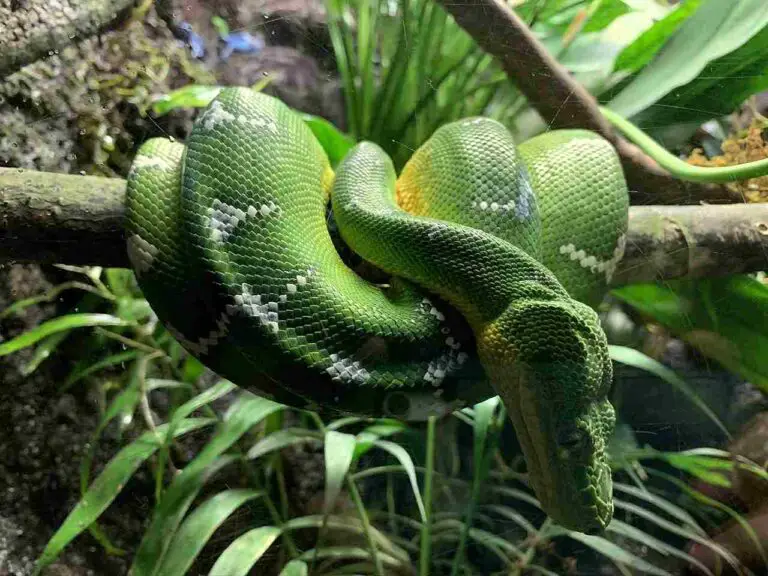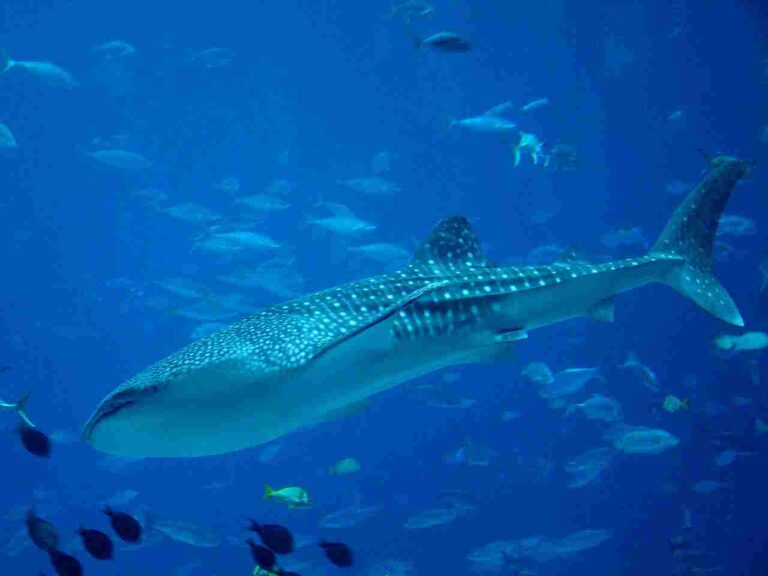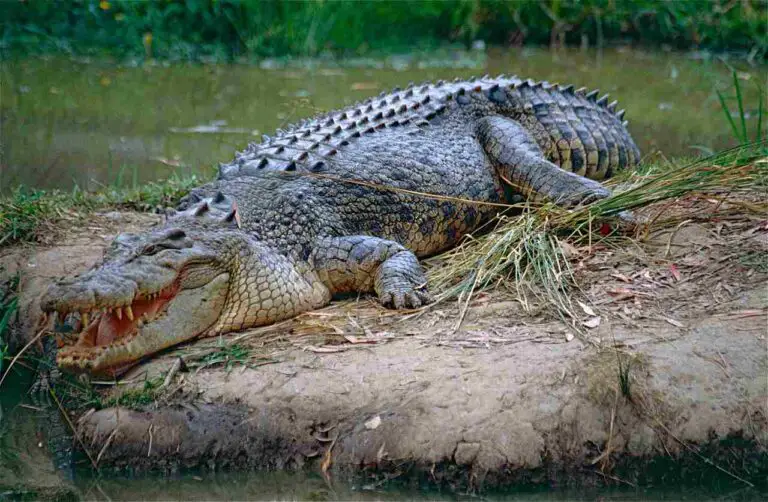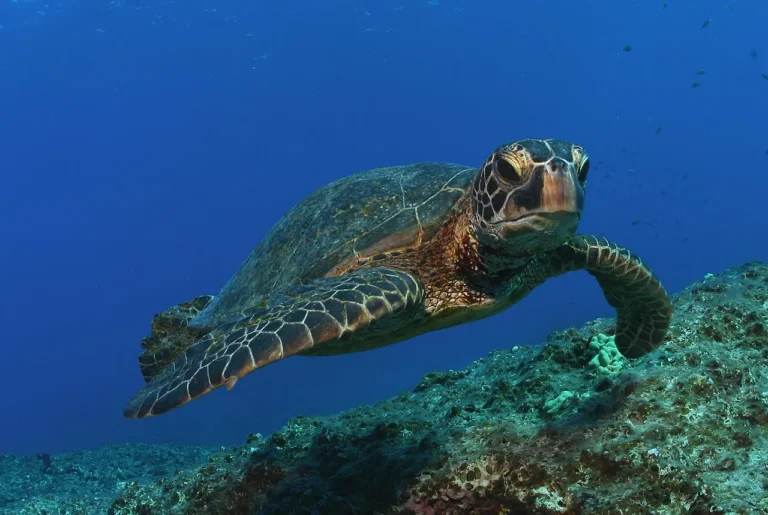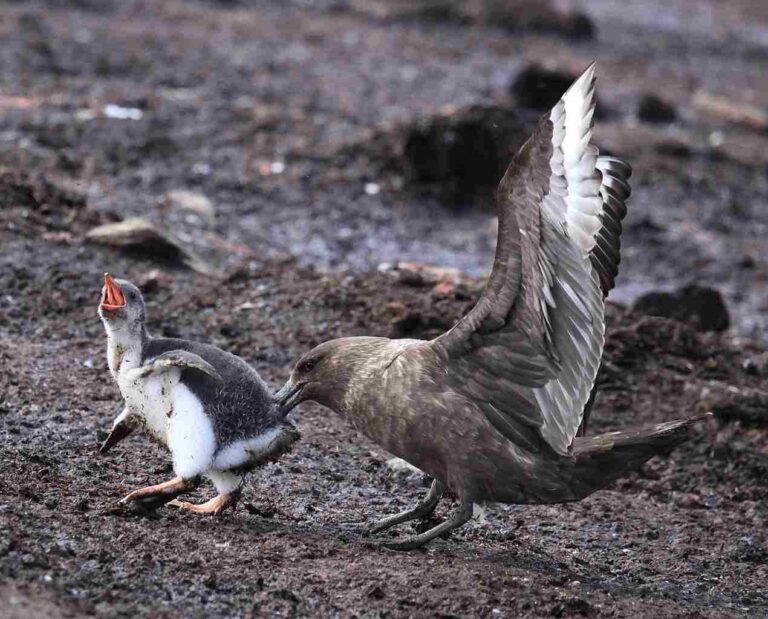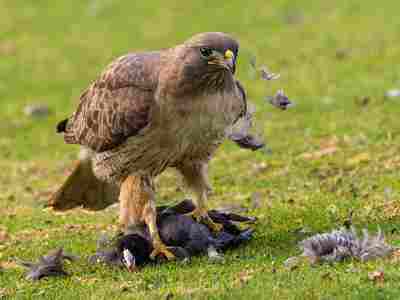Are Humans Producers or Consumers? Feeding Behavior of Humans Discussed
Humans are not producers, but rather consumers; because they do not manufacture their own food, but must feed on other organisms to survive.
It must be noted that the above is correct within ecological contexts like food chains and webs. In other fields such as economics and socialism, humans can fall under both categories (that is; producers and consumers).
This article sheds light on the ecological classification/position, and role, of humans.
Is a Human a Producer?
A human is not a producer in the ecosystem because they do not participate in the synthesis of biomass either from solar energy (photosynthesis) or chemical stored energy (chemosynthesis). This fundamental distinction places humans squarely in the category of consumers within ecological contexts.
Photosynthesis is the process by which green plants, algae, and some bacteria convert sunlight into chemical energy, which is then used to synthesize organic compounds.
Humans, on the other hand, lack the ability to carry out photosynthesis. We do not possess the necessary chlorophyllous pigments or specialized structures like leaves to capture sunlight and convert it into usable energy. As a result, we are unable to produce our own food from solar energy.
Similarly, humans do not engage in chemosynthesis, which is the process by which certain bacteria and archaea use chemical energy to produce organic compounds.
These organisms typically inhabit extreme environments such as deep-sea hydrothermal vents or sulfur-rich caves. Humans, however, do not possess the physiological adaptations required for chemosynthesis.
Instead, humans rely on consuming other organisms for their energy and nutrient needs. We are heterotrophs, meaning we obtain our energy by ingesting and metabolizing organic matter produced by other organisms. Whether we consume plants as herbivores or animals as carnivores, humans are fundamentally consumers in the food chain.
It is important to note that while humans may not be producers in ecological contexts, we can fall under both categories of producers and consumers in other fields such as economics and socialism. In these contexts, humans can engage in the production of goods and services, contributing to the overall economy and societal well-being.
Therefore, a human is not a producer in the ecosystem because they do not participate in photosynthesis or chemosynthesis. Humans rely on consuming other organisms for their energy and nutrient needs, placing them firmly in the category of consumers within ecological contexts. However, it is worth recognizing that humans can also be producers in other fields, contributing to economic and societal development.
Reasons Why Humans are Not Producers
1. Humans do Not Participate in Photosynthesis
Photosynthesis is the process by which plants and some microorganisms convert sunlight into energy, using chlorophyll and other pigments. However, humans do not possess the ability to carry out photosynthesis.
* Unlike plants, humans lack the necessary chlorophyllous pigments in their cells to capture sunlight and convert it into energy. This means that humans cannot produce their own food through photosynthesis, unlike autotrophic organisms such as plants and algae.
* Instead, humans rely on consuming organic matter, such as plants and animals, to obtain the energy they need for survival. This makes humans heterotrophs, which means they obtain their energy by consuming other organisms.
* While humans may indirectly benefit from photosynthesis by consuming plants that have undergone this process, they themselves are not directly involved in it. Humans are dependent on the producers in the food chain, such as plants, to convert sunlight into usable energy.
As this implies, one of the reasons why humans are not producers is that they do not participate in photosynthesis. Humans lack the necessary chlorophyllous pigments and physiological mechanisms to convert sunlight into energy.
Instead, humans rely on consuming other organisms to obtain the energy they need for survival. This fundamental difference in feeding behavior distinguishes humans as consumers rather than producers in the ecosystem.
2. Humans Posses No Chlorophyllous Pigments
Another reason why humans are not producers is that they lack chlorophyllous pigments. Chlorophyll is a green pigment found in plants and some microorganisms that is essential for photosynthesis. However, humans do not possess chlorophyll in their cells, which means they cannot capture sunlight and convert it into energy like plants do.
Without chlorophyll, humans are unable to produce their own food through photosynthesis. This is a key characteristic of producers in the ecosystem, such as plants and algae. Instead, humans rely on consuming other organisms to obtain the energy they need for survival.
The absence of chlorophyll in humans is a significant factor that distinguishes them as consumers rather than producers. While humans may indirectly benefit from photosynthesis by consuming plants, they themselves are not directly involved in the process. Humans depend on the producers in the food chain, such as plants, to convert sunlight into usable energy.
This lack of chlorophyllous pigments in humans is a fundamental difference in their feeding behavior compared to autotrophic organisms. Humans are heterotrophs, meaning they obtain their energy by consuming other organisms. This reliance on external sources of energy further reinforces the classification of humans as consumers in the ecosystem.
Therefore, the absence of chlorophyllous pigments in humans prevents them from participating in photosynthesis and producing their own food. Humans rely on consuming other organisms to obtain the energy they need for survival, making them consumers rather than producers in the ecosystem.
3. Oxygen Intake and Carbon Release
Another reason why humans are not producers is their oxygen intake and carbon release. Unlike plants, which release oxygen as a byproduct of photosynthesis, humans consume oxygen and release carbon dioxide during respiration. This fundamental difference in gas exchange further solidifies the classification of humans as consumers in the ecosystem.
When humans inhale, they take in oxygen from the atmosphere, which is then transported to their cells through the bloodstream. This oxygen is crucial for cellular respiration, a process that releases energy from food molecules. As a result of this metabolic process, humans exhale carbon dioxide as a waste product.
In contrast, primary producers like plants play a vital role in the carbon cycle by absorbing carbon dioxide from the atmosphere and converting it into oxygen through photosynthesis. This process helps to maintain the balance of gases in the environment and provides oxygen for other organisms, including humans.
The fact that humans rely on oxygen intake and carbon release for their survival highlights their role as consumers. They depend on the oxygen produced by primary producers to sustain their respiration and energy production. Without the oxygen generated by plants, humans would not be able to survive.
Generally, the oxygen intake and carbon release of humans distinguish them as consumers rather than producers.
While plants contribute to the oxygen supply and carbon cycle through photosynthesis, humans rely on consuming other organisms for energy and release carbon dioxide as a byproduct of respiration. This dependence on external sources of oxygen and carbon further emphasizes the consumer role of humans in the ecosystem.
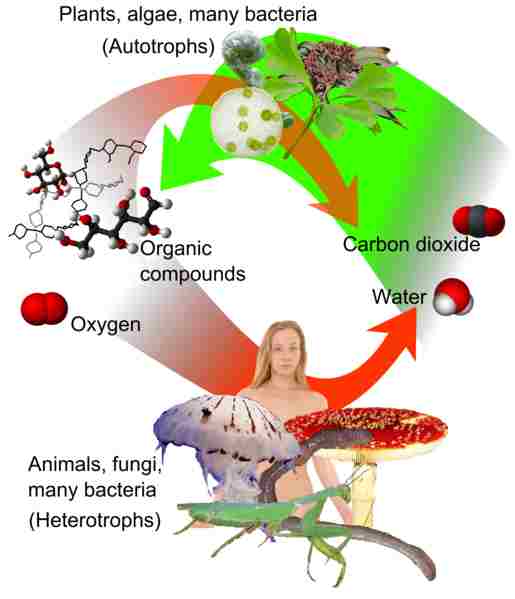
4. Humans Have Physiological Differences from Primary Producers
Another reason why humans are not producers is due to their physiological differences from primary producers. Unlike plants, humans lack the necessary structures and mechanisms to carry out photosynthesis.
Plants have specialized organelles called chloroplasts that contain chlorophyll, a pigment essential for capturing sunlight and converting it into energy. Humans, on the other hand, do not possess chlorophyllous pigments or any structures capable of photosynthesis.
The absence of chlorophyll in humans means that they cannot produce their own food through the process of photosynthesis. Instead, humans rely on consuming other organisms for their nutritional needs. They obtain energy by breaking down complex organic molecules found in plants and animals. This fundamental difference in energy acquisition further supports the classification of humans as consumers rather than producers.
Moreover, humans have a digestive system that is adapted to process and extract nutrients from the food they consume.
This system includes specialized organs such as the stomach and intestines, which play a crucial role in breaking down food into smaller molecules that can be absorbed by the body. These physiological differences highlight the fact that humans are not equipped to produce their own food but rather depend on external sources for sustenance.
Therefore, humans have physiological differences from primary producers that prevent them from being classified as producers. The absence of chlorophyll and the presence of a specialized digestive system emphasize the consumer role of humans in the ecosystem. By understanding these distinctions, we can appreciate the unique position humans hold as consumers and the importance of maintaining a balanced food chain.
Is a Human A Consumer?
Yes, a human is indeed a consumer in the ecosystem or food chain. Humans rely on other organisms as sources of food and nutrients, making them an integral part of the consumer category. As omnivores, humans have the ability to consume both plant and animal matter, which further solidifies their role as consumers.
Being omnivores, humans have a diverse diet that includes a wide range of plant-based foods such as fruits, vegetables, grains, and legumes. Additionally, humans also consume animal products like meat, fish, eggs, and dairy. This ability to obtain nutrition from both plant and animal sources allows humans to adapt to various environments and dietary options.
The consumption of both plant and animal matter by humans is essential for their survival and overall well-being. Plants provide humans with essential nutrients such as carbohydrates, vitamins, minerals, and fiber. Animal products, on the other hand, are rich sources of protein, essential fatty acids, and certain vitamins and minerals that are not as abundant in plant-based foods.
By consuming other organisms, humans play a crucial role in the transfer of energy and nutrients within the food chain. As consumers, humans occupy a higher trophic level, exerting a significant effect on the entire ecosystem.
Their consumption patterns and choices can impact the population dynamics of other organisms, as well as the overall balance and stability of the food chain.
Therefore, humans are consumers in the ecosystem due to their dependence on other organisms for food and nutrients. As omnivores, humans have the ability to consume both plant and animal matter, which allows them to adapt to various dietary options.
What Type of Consumers are Humans?
Humans are top-level consumers in the ecosystem, occupying either the tertiary (level 4) or quaternary (level 5) trophic level. The specific level depends on factors such as the length of the food chain and the size of the ecosystem. As top-level consumers, humans are positioned at the apex of the food chain, exerting a significant influence on the dynamics of the entire ecosystem.
At the tertiary or quaternary level, humans primarily consume other consumers, such as herbivores and omnivores. This means that humans rely on organisms that obtain their energy and nutrients from primary producers, such as plants. By consuming these secondary consumers, humans obtain the energy and nutrients necessary for their survival and growth.
The consumption patterns of humans vary depending on cultural, geographical, and individual factors. Some humans predominantly consume plant-based foods, making them herbivorous consumers.
These individuals obtain their energy and nutrients directly from primary producers, such as fruits, vegetables, grains, and legumes.
On the other hand, humans who consume both plant and animal matter are considered omnivorous consumers. This dietary flexibility allows humans to adapt to different environments and food sources.
It is important to note that the classification of humans as top-level consumers does not mean that they exclusively consume other consumers. Humans also consume primary producers directly, especially in the form of plant-based foods. This dual role as both consumers and potential prey for other organisms highlights the complex interactions within the food chain.
Deducting from the above, humans are classified as top-level consumers in the ecosystem, occupying either the tertiary or quaternary trophic level.
They primarily consume other consumers, such as herbivores and omnivores, but also obtain energy and nutrients directly from primary producers. This underscores the interconnectedness of the food chain and the importance of sustainable consumption practices.
Reasons Why Humans are Top-level Consumers
1. Humans are Always Apex Predators in the Ecosystem
Humans are classified as tertiary or quaternary consumers in the ecosystem due to their position as apex predators. As apex predators, humans are at the top of the food chain and have no natural predators. This allows them to consume organisms from lower trophic levels without being preyed upon themselves.
One reason why humans are considered apex predators is their superior intelligence. Humans have the ability to plan and strategize their hunting or gathering activities, giving them an advantage over other consumers. This intelligence allows humans to outsmart and capture their prey, further solidifying their position as top-level consumers.
Another reason why humans are classified as apex predators is their ability to feed on both plants and animals. Unlike other consumers that are limited to a specific diet, humans have a diverse range of food sources. This versatility allows humans to adapt to different environments and obtain nutrients from various sources, making them highly successful as consumers.
Lastly, humans exert a significant effect on the entire food chain. Through activities such as hunting, fishing, and agriculture, humans can alter the population dynamics of other organisms in the ecosystem. This influence on the food chain further emphasizes their role as top-level consumers.
Therefore, humans are classified as tertiary or quaternary consumers because they are apex predators in the ecosystem. Their superior intelligence, ability to consume both plants and animals, and significant impact on the food chain contribute to their position as top-level consumers.
2. Superior Intelligence Places Humans Above Other Consumers
Superior intelligence is a key factor that places humans above other consumers in the ecosystem. This cognitive ability allows humans to outsmart and adapt to their environment, giving them a competitive edge in obtaining food resources.
With their superior intelligence, humans have the capacity to plan and strategize their hunting or gathering activities.
They can analyze the behavior of their prey, understand their patterns, and devise effective ways to capture them. This intelligence enables humans to develop sophisticated tools and techniques for hunting, such as traps, snares, and weapons, which significantly increase their success rate as consumers.
Furthermore, human intelligence allows them to exploit a wide range of food sources. While some consumers are limited to a specific diet, humans have the cognitive flexibility to consume both plants and animals.
This versatility gives humans an advantage in environments where certain food sources may be scarce or inaccessible. They can adapt their diet based on the availability of resources, ensuring their survival and success as consumers.
In addition, human intelligence enables them to develop agricultural practices. Through the cultivation of crops and domestication of animals, humans have created a sustainable and reliable source of food. This ability to manipulate the environment and create food systems sets humans apart from other consumers, as they have the capacity to control and shape their own food sources.
The superior intelligence of humans also allows them to engage in complex social behaviors. Humans can collaborate and communicate with each other, sharing knowledge and techniques for obtaining food. This social intelligence enhances their ability to acquire resources and ensures their survival as consumers.
Therefore, superior intelligence places humans above other consumers in the ecosystem. Their ability to plan, strategize, adapt, and manipulate the environment gives them a significant advantage in obtaining food resources. This cognitive superiority sets humans apart and solidifies their position as top-level consumers in the natural world.
3. Humans can Feed On Both Plants and Animals
Humans can feed on both plants and animals, which is a key reason why they are classified as tertiary or quaternary consumers in the food chain.
As omnivores, humans have the ability to consume a wide variety of food sources, including fruits, vegetables, grains, meat, and fish. This dietary flexibility allows humans to obtain essential nutrients from different food groups, ensuring their overall health and well-being.
By consuming plants, humans tap into the primary producers of the ecosystem. Plants are rich in carbohydrates, fiber, vitamins, and minerals, which are vital for human growth and development. Fruits and vegetables, in particular, provide a wide range of nutrients and antioxidants that support various bodily functions and help prevent diseases.
On the other hand, humans also consume animals as a source of protein, fats, and other essential nutrients. Animal products such as meat, poultry, fish, and dairy are valuable sources of high-quality protein, which is crucial for muscle growth, repair, and maintenance.
These animal-based foods also contain important vitamins and minerals like iron, zinc, and vitamin B12, which are not as readily available in plant-based sources.
The ability to consume both plants and animals gives humans a distinct advantage in the food chain. It allows them to access a diverse range of nutrients and adapt to different environments. This dietary flexibility has played a significant role in the survival and evolution of humans throughout history.
Therefore, humans can feed on both plants and animals, making them versatile consumers in the food chain. Their omnivorous nature enables them to obtain a wide array of nutrients from different food sources, ensuring their nutritional needs are met. This adaptability has been a key factor in the success and resilience of the human species.
4. Human Exert Significant Effect On the Entire Food Chain
Humans exert a significant effect on the entire food chain, which is one of the reasons why they are classified as tertiary or quaternary consumers. Through their actions and choices, humans have the power to shape and influence the dynamics of ecosystems and the distribution of energy and resources within them.
One way in which humans impact the food chain is through their role as predators. As apex predators, humans have the ability to hunt and consume other animals. This can have a direct impact on the population dynamics of prey species, leading to changes in their abundance and distribution. For example, overhunting of certain species can result in their decline or even extinction, disrupting the balance of the food chain.
Furthermore, human activities such as agriculture and fishing have a profound effect on the availability and distribution of food resources.
Agriculture involves the cultivation of crops and the rearing of livestock, which can lead to the conversion of natural habitats into agricultural land. This can result in the loss of biodiversity and the displacement of native species, affecting the entire food chain.
Similarly, fishing activities can deplete fish populations and disrupt marine ecosystems. Overfishing, illegal fishing practices, and destructive fishing methods can lead to the decline of fish stocks and the destruction of coral reefs and other marine habitats. This not only affects the fish themselves but also the predators that rely on them for food.
In addition to direct impacts, human activities also contribute to indirect effects on the food chain through pollution and climate change.
Pollution from industrial activities, agriculture, and waste disposal can contaminate water bodies and soil, affecting the health and survival of organisms at all levels of the food chain. Climate change, caused primarily by human-induced greenhouse gas emissions, can alter the distribution and abundance of species, disrupt migration patterns, and affect the availability of food resources.
Deducting from the above, humans exert a significant effect on the entire food chain through their role as predators, their impact on food resource availability, and their contribution to pollution and climate change.
These actions and choices have far-reaching consequences for the balance and functioning of ecosystems. Recognizing and understanding the impact of human activities on the food chain is crucial for promoting sustainable practices and ensuring the long-term health and stability of our planet’s ecosystems.
Where are Humans in the Food Chain?
In the food chain, humans are found at the apex level, which is either level 4 (as tertiary consumers) or level 5 (as quaternary consumers). As apex predators, humans occupy the highest trophic level in most ecosystems, meaning they have no natural predators and are at the top of the food chain.
At the apex level, humans have the ability to consume organisms from lower trophic levels, including both plants and animals. This makes humans omnivores, as they have the flexibility to obtain energy and nutrients from a variety of sources. Humans can consume plants or animals, depending on their dietary choices.
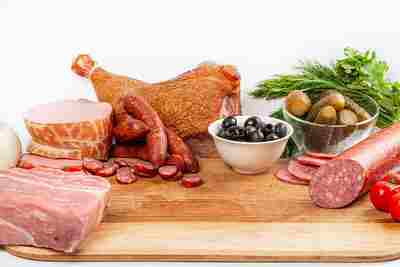
One of the reasons why humans are positioned at the top of the food chain is their superior intelligence. Unlike other consumers, humans have the cognitive ability to plan, strategize, and develop sophisticated hunting and gathering techniques. This intelligence allows humans to outcompete other predators and secure their position as apex predators.
Furthermore, humans have the capacity to exert significant control and influence over the entire food chain. Through their actions and choices, humans can shape the distribution of energy and resources within ecosystems. For example, humans can selectively hunt certain species, leading to changes in the population dynamics of prey species and altering the balance of the food chain.
In addition to their role as predators, humans also have a significant impact on the availability and distribution of food resources. Through agriculture and fishing, humans have the ability to manipulate and modify the natural environment to meet their dietary needs. This can have both positive and negative effects on the food chain, as it can lead to the displacement of native species and the depletion of certain populations.
Therefore, humans occupy a unique position in the food chain as apex predators. Their superior intelligence, dietary flexibility, and ability to shape the distribution of energy and resources make them a dominant force in ecosystems.
FAQs
1. Is a Person a Consumer or Producer?
A person is a consumer, rather than a producer, because they feed on other organisms.
When considering the feeding behavior of humans, it is clear that humans fall into the category of consumers. As mentioned earlier, humans obtain their energy and nutrients by consuming other organisms. This makes them dependent on other living beings for their sustenance.
Humans, like other consumers, rely on the consumption of plants and/or animals to meet their nutritional needs. They do not possess the ability to produce their own food through photosynthesis, like plants do. Instead, humans obtain energy by consuming organic matter that has already been produced by other organisms.
Furthermore, humans have physiological differences from primary producers, such as plants. Humans do not possess chlorophyllous pigments, which are necessary for photosynthesis. Instead, humans have adapted to be consumers, with digestive systems designed to break down and absorb nutrients from the food they consume.
Therefore, humans are consumers because they rely on the consumption of other organisms for their energy and nutrients. They do not possess the ability to produce their own food through photosynthesis, making them dependent on other living beings in the food chain.
2. Are Humans Consumers Yes or No?
Yes, humans are definitely consumers. As mentioned earlier, humans rely on the consumption of other organisms for their energy and nutrients. This makes them dependent on other living beings in the food chain.
Humans do not possess the ability to produce their own food through photosynthesis, like plants do. Instead, they obtain energy by consuming organic matter that has already been produced by other organisms.
Being consumers, humans play a crucial role in the ecosystem. They are top-level consumers or apex predators, usually occupying the tertiary or quaternary level in the food chain. This means that humans are at the top of the food chain and have a significant impact on the entire ecosystem.
Humans are also unique consumers due to their superior intelligence. This intelligence allows them to adapt and consume a wide variety of food sources, including both plants and animals. Unlike other consumers, humans have the ability to make choices about what they consume, based on their preferences and cultural practices.
Therefore, humans are unquestionably consumers. They rely on the consumption of other organisms for their energy and nutrients, and their position as top-level consumers in the food chain highlights their significant role in the ecosystem.
3. What Type of Consumer are Humans?
Humans are top-level consumers or apex predators in the food chain. As mentioned earlier, they occupy the tertiary or quaternary level, which means they are at the top of the trophic hierarchy. This position highlights the significant role that humans play in the ecosystem.
Being top-level consumers, humans have a wide range of food sources available to them. They have the ability to consume both plants and animals, making them omnivores. This adaptability is a result of their superior intelligence, which allows them to make choices about what they consume based on their preferences and cultural practices.
In terms of their feeding behavior, humans have a diverse diet that varies across different cultures and regions.
Some humans primarily consume plant-based foods, making them herbivores, while others consume primarily animal-based foods, making them carnivores. However, the majority of humans fall into the category of omnivores, as they consume a combination of both plant and animal products.
The ability of humans to consume a wide variety of food sources is one of the reasons why they are considered top-level consumers. This adaptability and flexibility in their feeding behavior contribute to their success as a species and their ability to thrive in various environments.
4. Why are Humans Consumers?
Humans are consumers because they feed on other organisms. As mentioned earlier, humans occupy the top level of the food chain, making them apex predators. This means that they rely on consuming other organisms for their energy and nutrition needs.
One of the main reasons why humans are consumers is their physiological makeup. Unlike primary producers, such as plants, humans do not possess chlorophyllous pigments or the ability to undergo photosynthesis. This means that they cannot produce their own food from sunlight, water, and carbon dioxide. Instead, humans rely on consuming other organisms, both plants and animals, to obtain the necessary nutrients for survival.
Another reason why humans are consumers is their unique position in the ecosystem. With their superior intelligence, humans have the ability to make choices about what they consume based on their preferences and cultural practices.
This adaptability allows them to consume a wide variety of food sources, making them omnivores. Their diverse diet contributes to their success as a species and their ability to thrive in different environments.
To reiterate, humans are consumers because they feed on other organisms. Their physiological makeup and adaptability as omnivores contribute to their position as top-level consumers in the food chain. By consuming a wide variety of food sources, humans obtain the necessary energy and nutrients for their survival and play a significant role in the ecosystem.
5. Are Humans Primary Consumers?
Humans are not primary consumers because they do not naturally feed on autotrophs alone.
The term “primary consumer” refers to organisms that directly and solely consume autotrophs, which are organisms capable of producing their own food through photosynthesis.
Humans do not solely rely on consuming autotrophs for their energy and nutrition needs.
Instead, humans are classified as omnivores, meaning they have the ability to consume both plants and animals. This makes them secondary consumers in the food chain.
Humans have a diverse diet that includes a wide variety of food sources, including fruits, vegetables, grains, meat, and dairy products. By consuming both plants and animals, humans obtain the necessary nutrients for their survival.
While humans may consume autotrophs both directly, or indirectly through the consumption of herbivores, they are not considered primary consumers themselves. The term “primary consumer” is typically used to describe naturally-herbivorous organisms that feed only on autotrophs. Humans, on the other hand, occupy a higher trophic level in the food chain as omnivores.
6. Are Humans Carnivores Herbivores or Omnivores?
Humans are omnivores, rather than carnivores or herbivores, as they are capable of consuming both plants and animals. This dietary flexibility is a defining characteristic of our species. Unlike strict carnivores or herbivores, humans have evolved to adapt to a wide range of food sources.
As omnivores, humans have the ability to derive nutrients from both plant-based and animal-based foods. This adaptability has been crucial to our survival and success as a species. Our digestive system is designed to process a diverse array of foods, allowing us to obtain the necessary nutrients for optimal health.
The omnivorous nature of humans is evident in our historical and cultural practices. Throughout history, humans have relied on a combination of plant and animal foods to meet their nutritional needs.
Traditional diets from various cultures around the world showcase the consumption of grains, fruits, vegetables, meats, and dairy products.
This dietary flexibility has provided humans with a distinct advantage. By being able to consume a wide range of food sources, we have access to a greater variety of nutrients. This adaptability has allowed us to thrive in different environments and adapt to changing conditions.
7. Are Humans Decomposers?
Humans are not considered decomposers in the traditional sense. Decomposers are organisms that consume the remains of dead organisms or excrements, breaking them down into simpler substances and returning nutrients to the ecosystem.
While humans do play a role in the decomposition process indirectly, we do not actively consume and break down organic matter in the same way that decomposers do.
Instead, humans are better classified as consumers in the food chain. As discussed earlier, humans are omnivores, capable of consuming both plants and animals. We obtain nutrients from these food sources through digestion and absorption, rather than through decomposition.
However, it is important to note that humans do contribute to the decomposition process indirectly. When humans die, their bodies undergo decomposition, and the nutrients within them are returned to the environment. Additionally, human waste, such as feces, can serve as a source of nutrients for decomposer organisms.
Therefore, while humans are not decomposers themselves, we do play a role in the decomposition process through our interactions with the environment. Our consumption and eventual decomposition contribute to the cycling of nutrients in ecosystems, but we are not primary decomposers in the traditional sense.
8. Are Humans Heterotrophs?
Yes, humans are indeed heterotrophs. As discussed earlier, heterotrophs are organisms that obtain their energy and nutrients by consuming other organisms. Humans, being omnivores, obtain their energy from both plant and animal sources. We consume a variety of foods, including fruits, vegetables, grains, meat, and dairy products, to meet our nutritional needs.
As heterotrophs, humans rely on the complex organic molecules present in the food we consume. These molecules, such as carbohydrates, proteins, and fats, are broken down through the process of digestion.
Enzymes in our digestive system break down these molecules into smaller, more easily absorbable forms. Once absorbed, these nutrients are used by our cells for energy, growth, and repair.
The fact that humans are heterotrophs is evident in our physiological characteristics. Unlike autotrophs, such as plants, humans do not possess chlorophyllous pigments or the ability to carry out photosynthesis. Instead, we rely on the energy stored in the organic molecules of other organisms.
9. Are Humans Secondary Consumers?
Humans are not classified as secondary consumers. This is due to their superior intelligence and the tools they possess, which allow them to hunt and consume a wide range of animals.
As discussed earlier, secondary consumers are organisms that primarily feed on primary consumers, which in turn feed on primary producers. However, humans do not solely rely on consuming other consumers for their nutrition.
Instead, humans are considered top-level consumers or apex predators in the food chain. This is because humans have the ability to feed on both plants and animals, making them omnivores. Their diet includes fruits, vegetables, grains, meat, and dairy products, providing them with a diverse range of nutrients.
Furthermore, humans exert a significant effect on the entire food chain. Through their activities such as farming, fishing, and hunting, humans can alter the populations of various species and influence the balance of ecosystems. This further emphasizes their role as top-level consumers rather than secondary consumers.
Therefore, humans are not secondary consumers. Their superior intelligence, ability to hunt, and diverse diet make them top-level consumers or apex predators in the food chain.
Conclusion
* In this article, we have explored the question of whether humans are producers or consumers.
* We have discussed the reasons why humans are not considered producers, such as their inability to participate in photosynthesis and lack of chlorophyllous pigments.
* On the other hand, we have examined the reasons why humans are classified as consumers, including their position as top-level consumers in the food chain and their ability to feed on both plants and animals.
* We have also highlighted the significant impact that humans have on the entire food chain through their activities.
* Overall, it is clear that humans are not secondary consumers but rather top-level consumers or apex predators.



